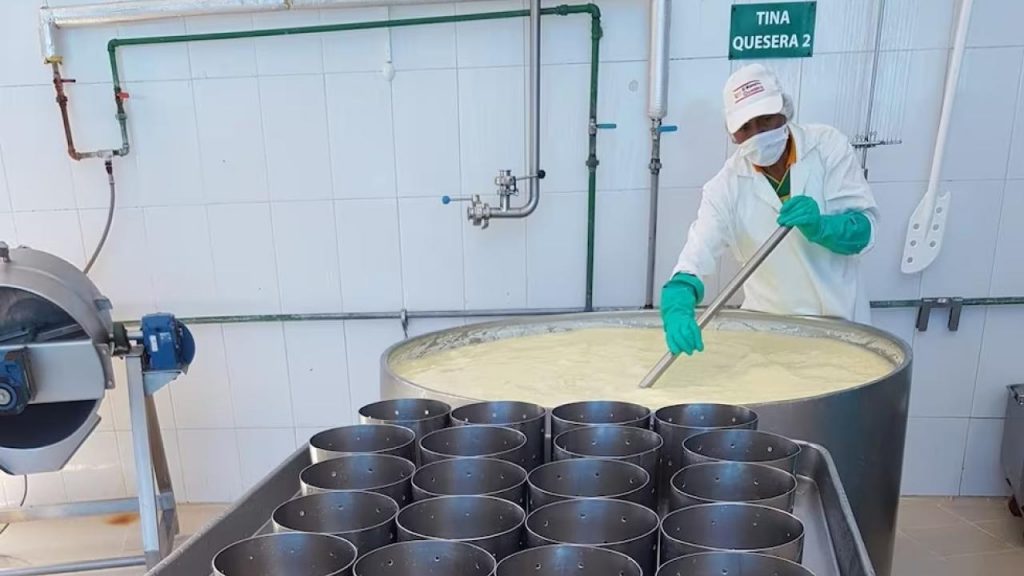
The Chinese dairy market is expected to open in November, but Ecuadorian dairy farmers will not have the necessary stock for another year.
After the regulation to promote the production, marketing, industrialization, consumption and pricing of milk and its derivatives was published last March, which allowed the application of a law that had been in force for two years, since May 2022, and after the technical negotiations of the sanitary protocol for dairy products exported from Ecuador to China were concluded last September, the Ecuadorian dairy sector is already looking forward to the opening of the Asian giant for its products, but also to the challenges in production and investments that it must face.
Even more so when the opening of the Chinese market for Ecuadorian dairy products is just around the corner. According to the Minister of Agriculture, Danilo Palacios, this will happen next November in China.
“We have arranged to meet at the fair to be held in China in November to symbolically sign the entry of dairy products into the Chinese market.”
Palacios highlighted that this is another benefit of the trade agreement between Ecuador and China that came into effect on May 1.
“We have been looking for new markets, the free trade agreement with China is a good fit, we had a visit from the vice minister of Chinese Customs, who was very interested.
This climate issue changes everyone’s perspective on the food issue, everyone is concerned about how to feed their population, and we find the Chinese authorities very interested in being able to promote and that is where the issue of milk and dairy products comes into play within the free trade agreement,” said the minister.
He revealed that for this purpose, Chinese customs inspectors carried out an inspection in four local dairy industries that were used as an example to qualify Ecuador, and “they all passed with very good marks.”
For Juan Pablo Grijalva, general manager of the Association of Cattle Ranchers of the Sierra and East (AGSO), expectations regarding the opening of the Chinese market are very high, not only for the dairy sector, but for the agricultural sector in general.
In this regard, Palacios also revealed that a portfolio of products was approved with the Chinese authorities. “We are also working on avocado, mango and pitahaya, so that they can be imported immediately,” he said.
In the case of dairy products, Grijalva said that Ecuador is exploring the sale of high-protein milk, which is what the Chinese population requires.
However, he clarified that they do not yet have the necessary volumes to immediately begin exporting once that market opens in November.
“We are doing the studies, we already produce high protein milk here, (but) this will take a little more time due to the health aspect,” Grijalva analyzed. The leader projects that exports of high protein milk to China could begin in approximately one year.
ECUADORIANS DEMONSTRATE LOW MILK CONSUMPTION
While the Ecuadorian dairy sector is preparing for the opening of the Chinese market, which according to the Minister of Agriculture, Danilo Palacios, is projected for next November, it is also working on one of the main challenges at home: local milk consumption.
Minister Palacios acknowledged that milk consumption in Ecuador is much lower than production. According to figures from the Association of Cattle Farmers of the Sierra and the East (AGSO), Ecuador produces approximately 5.5 million liters of milk per day, of which about 3 million go to the formal sector.
Palacios said that they are looking for alternatives to regulate the price of milk, which is affected by the oversupply. For the head of the Ministry of Agriculture, there are two ways to do this: regulate the supply or increase the demand.
To regulate the supply, Palacios revealed that they are working with dairy producers to find other alternatives in the Sierra, such as other crops that help alternate or replace milk production to a certain extent, one of these being lupine.
“We have had a lot of success with a native product such as chocho. In the Sierra we have managed to reactivate certain sectors, in Cotopaxi or Chimborazo. This year we have done around 250 hectares, giving another possibility to the milk producer (…) to be able to alternate their land and diversify,” said Palacios.
On the other hand, Juan Pablo Grijalva, general manager of AGSO, revealed that, apart from lupine, dairy producers are venturing into breeding guinea pigs for export and they also do not rule out taking advantage of the opening of that market to be able to enter with that product, but with the taste of the Chinese market.
“We are also looking at the diversification plan – and not having all our eggs in one basket – of exporting guinea pigs. The way to give Ecuador peace of mind to generate export income to bring in dollars through the export of products, those dollars generate a lot of work for producers of family farming and agricultural producers in general. We have very good expectations,” said Grijalva.
You can now read the most important #news on #eDairyNews #Whatsapp channels!!!
🇺🇸 eDairy News INGLÊS: https://whatsapp.com/channel/0029VaKsjzGDTkJyIN6hcP1K























